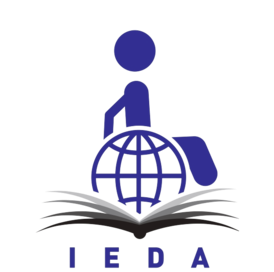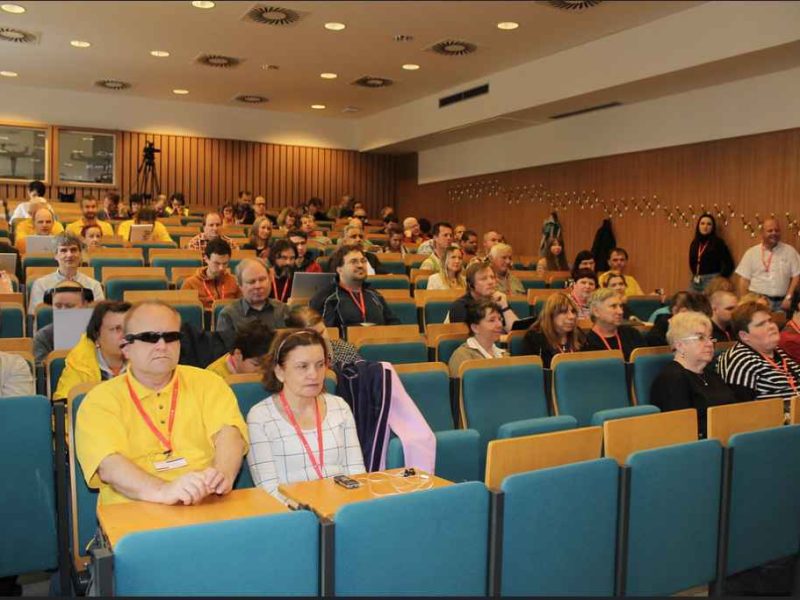Author: Center Spirala
From the perspective of the general view of education, inclusive education seems to be the most promising and strategic development form inside education in the coming future. This type of inclusive education encompasses all learning participants involved in an educational process and seeks to address them regarding their potential, characteristics, and interests. In this respect, when it comes to the population of persons with disabilities, a well-known professional distinction emerges between concepts of segregation, integration, and inclusion (International Convention on the Rights of Persons with Disabilities 2006). Inclusion as the last concept inside this relationship is or should as a part of a stronger ambition of making the educational environment as inclusive as possible. From the point of view of the rigidity of the system and the possibility of integrating drastic changes inside the education field, there is a big gap between general education and adult education (especially having in mind the unformal form of this adult education). Adult education in this regard has a more manoeuvre for free experimentation, including the integration of inclusive approaches to education. However, the ambition of inclusive education has quite a few challenges (or even traps) that are roughly drawn below inside three points.
Narrowing inclusive education to adult education
It is important to emphasize that the idea of inclusive education cannot be stronger incorporated in adult education without being more incorporated also into general forms of education. Though, as mentioned above, drastic changes are hardly realistic within formal education systems in a sense of putting stronger attention and importance on inclusive education as large and rigid education systems are changing slowly (even if there is a desire to do so). The point is that the idea of inclusive education should start to appear more decisively on an abstract level, pointing out (also considering increasing robotics and expected artificial intelligence in the field of work) that more attention needs to be placed on the human working potential. Giving central attention to humans’ potential inside education is the path towards which the inclusive way of education refers. If the promotion of inclusive education, namely, is concretely encouraged mainly inside adult education, no real breakthrough is realistic towards incorporating inclusion into the educational environments inside modern society. Seen from the perspective of persons with disabilities in the light of their education, the distinction between the concepts of segregation, integration, and inclusion, where the latter takes the central role, could appear as an appropriate strategic approach that can bring promising professional shifts in the right direction. However, the reality of incorporating more elements of inclusion inside education could happen if the central message of inclusive education about the necessity of adapting the education systems and processes to the learners and their intrinsic potential will get more attention inside the overall educational environment.
Because although we promote the concept of inclusion, for example, compared with the integration concept, the latter is still at the forefront (assuming that the segregation concept in the case of persons with disabilities is less and less influential). This means, that even though the inclusion concept is on the table, we do have more likely in mind the integration concept. Integration, therefore, although mentioned here in the context of persons with disabilities, needs appropriate placement for the rest of the population. In a way that integration, if we consider it at the universal level, presupposes that it integrates all participants in educational processes (and not only persons with disabilities) in the system of providing educational content. Though, speaking about the integration, often it is not about integration on such a universal level but about integration linked to the persons with disabilities, where other learning participants are not the subject of attention. Putting central attention to integration in the light of persons with disabilities may unexpectedly appear questionable. By assumption, that due to limitations of the persons with disabilities, they are facing difficulties in following the educational process compared to other learners (there may also be here additional reservations about costs that are or could be necessary for space and some other adjustments in the case of the participation of persons with disabilities inside educational process). Here, the concept of inclusion can avoid such potential criticisms, as it assumes that inclusive education is based on discovering the abilities, potentials, and interests of everyone as a target learner. This equates the position of learners with disabilities or other learners, as the educational process in both groups is supposed to be based on their educational perspectives and motive.
Equating inclusive education with changes at the level of implementation
The concept of inclusive education faces the next obstacle where there may be a misunderstanding of this type of education. It means that inclusive education is interpreted on the level of implementation and associated with a more dynamic educational strategy (group work, sitting in a circle, intensifying practical exercises). Such a learning environment, at first sight, gives the impression that we are dealing with inclusive education due to much more a dynamic learning environment. URIHO practitioners clarified in this regard distinction between learning approaches of individual work and individualized approach at the first online LTT1 meeting in Zagreb, emphasizing that the individual work is not automatically the indicator of inclusive education. A more dynamic educational strategy primarily goes along with the logic of individual work, which does not mean that it is an individualized approach in which the educational process would focus on the target participants and on discovering and activating their potential. The dynamic educational strategy, as pointed out, gives only an apparent feeling that we are incorporating elements of the concept of inclusion into education. However, it is just a matter of spreading approaches so that the learners will (even) better understand the knowledge offered to them through more practical exercises, discussions, and conversations. Unfortunately, the use of digital educational approaches often belongs to this mental framework, where digitalization uses to make offered knowledge to learners even more understandable. From the point of view of acquiring and understanding new knowledge, more dynamic educational strategies are not controversial but desirable. However, we need to be aware that more dynamic learning strategies still represent a conservative-classical education doctrine, concerning which the learners accept new knowledge while discovering their potential is not at the forefront. In other words, the target participant is still in the function of the education system and not the other way around.
Inclusive education between the educational and upbringing aspect
The central emphasis inside inclusive education, as mentioned, is placed on the goal of the learners to focus on their (un)discovered potentials and further build on their educational path. Of course, new knowledge and skills are necessary for learners, but this needs to serve for activating the potential at learners. In this way, the individual learner can direct his development, where he proceeds from his educational starting points. By giving focus on learners’ potential a certain conceptual confusion may appear that the tolerance and respect of learners in the educational process (what belongs to the level of relative- upbringing aspects of education) look like indicator of inclusive education. The concept of inclusion can, therefore, unwillingly, and unknowingly take the position of an upbringing arbiter by playing an upbringing rather than an educational role. Modern education taken as a whole, namely, is increasingly accused of lacking an upbringing role and excessive focus on the education role. The modern educational environment is also responsible that modern societies are shifting into fluid societies (so-called fluid societies_liquid society), inside which boundaries between individual subsystems and institutions are increasingly relativized in recent decades (Liquid society; Bauman Z. 2002, Eco U. 2017). Accordingly, the traditional pillars of power and identity orientation for a modern man are losing their meaning. That is also visible in the absence of necessary upbringing approaches, which we also miss in educational environments, either inside regular or inside adult education. However, concerning inclusive education in this respect, the absence of upbringing boundaries is not here meant as a right of the individual learner, that he can afford everything within the educational environment. Stricter upbringing rules of the game need to be reintroduced in school educational environments to restore understanding in the relationship between teachers (educators), parents, and pupils/students. In the case of adult education, we are dealing with adult learners, and the approach to this target group is different according to pupils/students in formal educational processes. However, the upbringing aspect of education also applies to such adult learners. As mentioned above, there may come a conceptual confusion, where the upbringing rules of the game (attitudes, behaviour, relationships, communications), essential also for the concept of inclusive education, are mistakenly interpreted as the educational rules of the game. Whereby, these educational rules inside inclusive education presuppose placing a central emphasis on the creation, openness, and boundlessness of the educational process. However, again, all this reference to the necessity of creating grounds for discovering the learners’ potential, and despite the mention of the need to treat each participant with tolerance and respect, it does not refer to the upbringing but the educational aspect of education.
Inclusive education in the light of persons with disabilities and in general, as promoted at the grassroots level, will only really come to life when it spreads as widely and deeply as possible to all pores and forms inside the modern educational environment. That this may happen is also important to constantly reflect on this concept of inclusive education to avoid possible missed interpretations.



